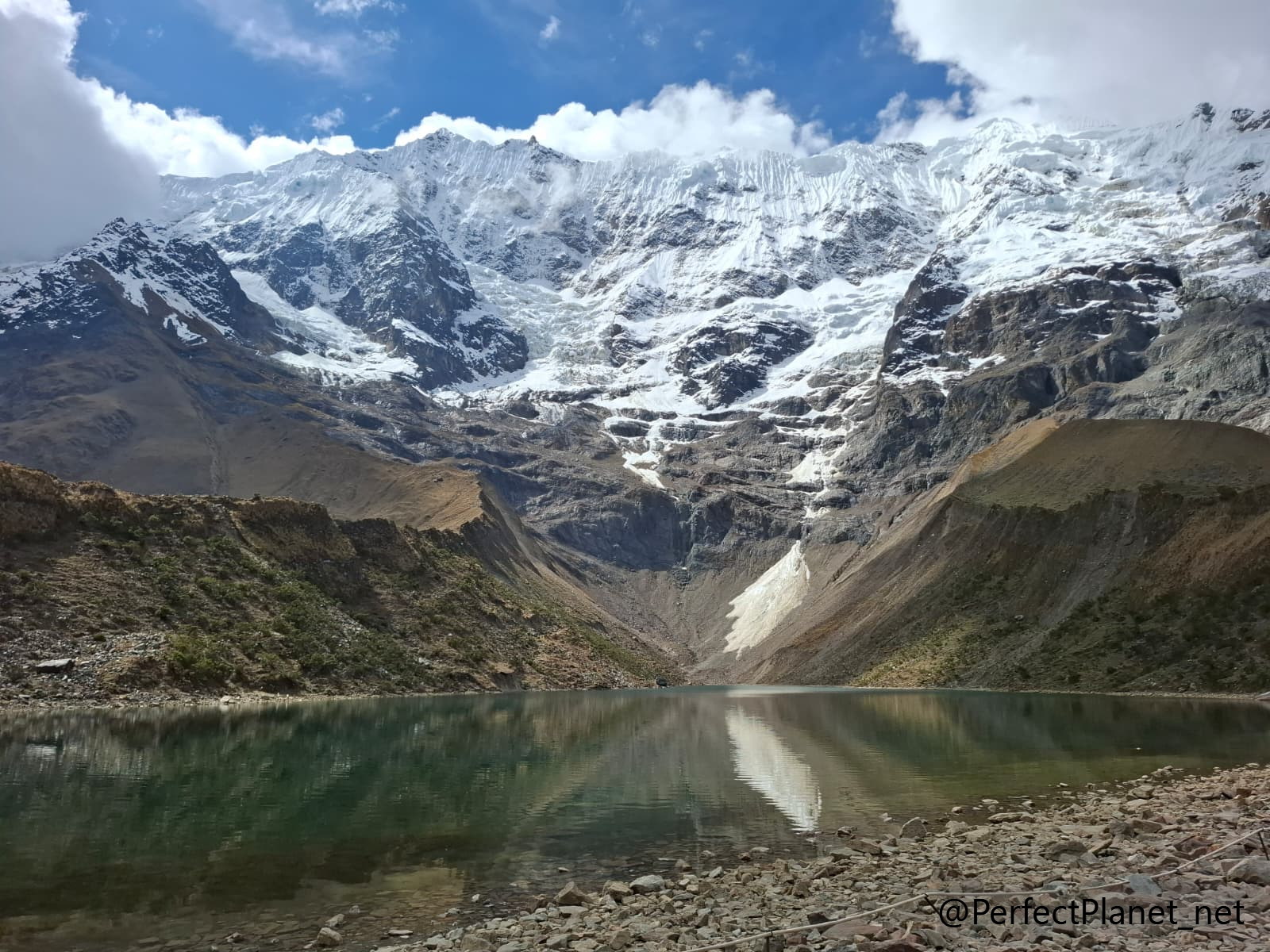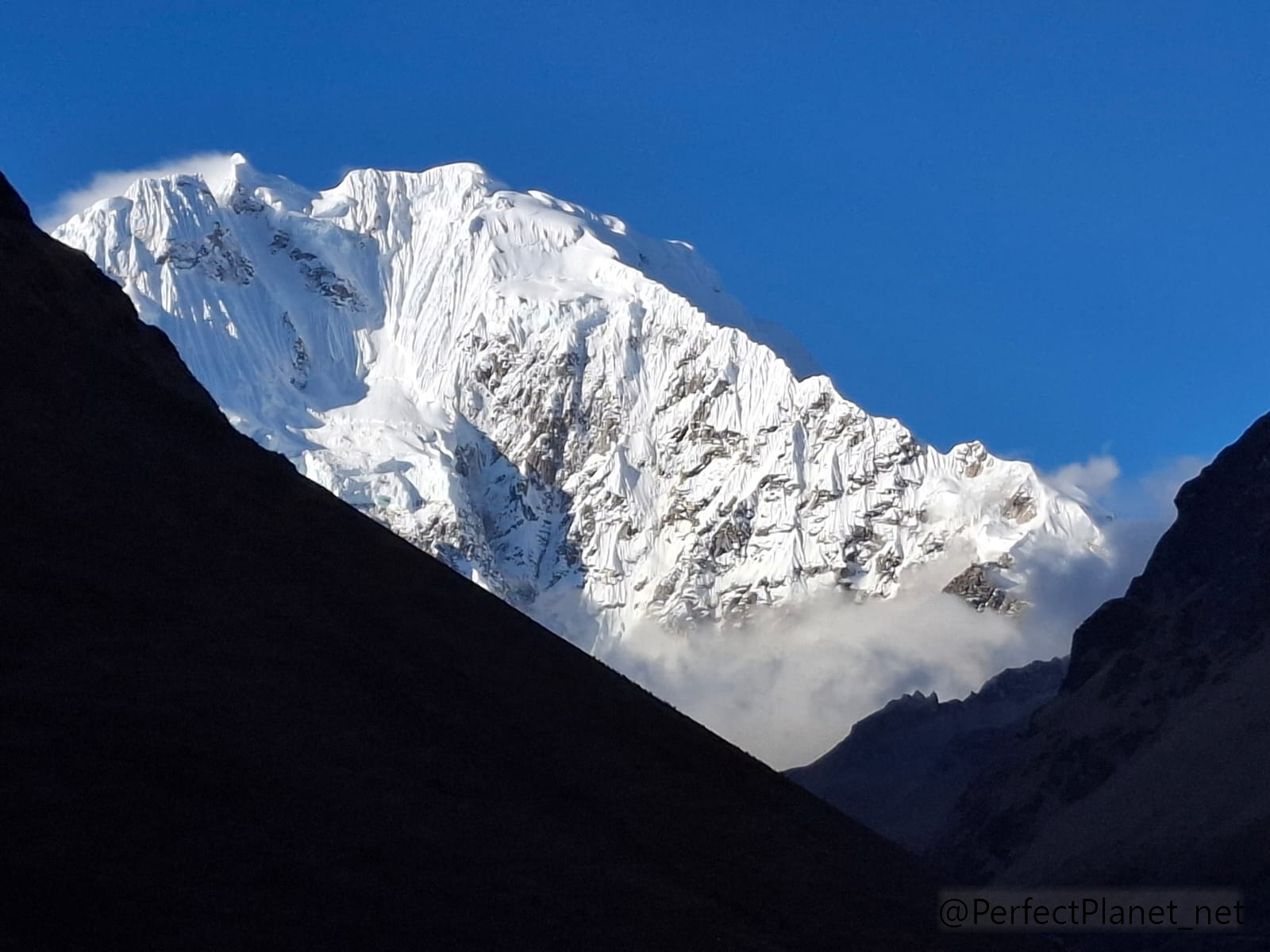In this post, we will help you prepare your rucksack for the Salkantay Trek on your own and avoid carrying too much weight or unnecessary items.

Laguna Humantay
Organising your rucksack properly is one of the most important things when preparing for a trek. It is advisable not to carry more than 10-15% of your body weight (maximum 10-11 kilos).
We each carry a 32-litre rucksack, weighing about 6 kilos. Bear in mind that you need to add at least two litres of water per day to the total weight you are carrying.
It is not necessary to take different clothes for each day; you can always wash them and even (this sounds crazy) wear the same ones for several days. It is advisable to store everything you carry in your rucksack in waterproof bags; it is more practical, keeps things dry and tidier.
Weight matters a lot, especially at high altitudes, so choosing the right clothing and equipment is essential. Here are some tips that we hope will help you.
In this case, a sleeping bag is not necessary as there are hostel-type accommodations in all the villages.

Salkantay
There is some basic equipment that you cannot do without:
1. Warm clothing. A fleece and a jumper as a first layer. I also took a softshell vest, which takes up little space and weighs very little, and I always find it very useful. As an outer layer, a down jacket for the coldest days and for rest periods in the lodges (remember that there is no heating in the rooms) and a Gore-Tex jacket to protect you from the rain and wind.
We also took a rain poncho to cover our rucksacks. If, like us, you find yourself walking for 7 to 8 hours on a rainy day, a poncho is the best option.
2. Small first aid kit with painkillers, hypo-sodium serum, Fortasec, saline solution, a bandage, Betadine, scissors, a thermal blanket and two cable ties.
3. Gloves, visor, neck warmer, sun cream, polarised sunglasses and hat/cap are other essentials for your rucksack. We take two pairs of gloves with us, one pair that is thinner and another pair that is thicker and waterproof for winter.
The woolly hat and neck warmer are very important, as a high percentage of body heat is lost through the head. Above 4,000 metres, you will practically have it tattooed on your head, even when you sleep. Don't forget a visor to protect you from the sun during the first few days.
Sunglasses are best if they are polarised or have category 4 filters. The sun's rays are more intense the higher you go, so it is essential to be well protected.
4. Good footwear, either soft boots or trainers, and flip-flops for relaxing in your accommodation.
Never wear new or recently purchased footwear, as chafing can cause problems.
5. Hiking poles. In our case, we take them everywhere, so although they are not essential for us, they are highly recommended.
6. Hygiene. Do not forget to bring a towel, shower gel, toilet paper and wet wipes for those times when you cannot shower.
Map
Among the non-essential but indispensable items, you need to consider the number of days you will be travelling so as not to take too many things.
Underwear. Three or four quick-drying items are sufficient. Remember that you can wash and dry them along the way.
Socks. We take five pairs, although you can take fewer and wash them.
T-shirts. Weight is important, and the less you carry, the better. We even weighed each item of clothing to choose the lightest ones. Two or three short-sleeved T-shirts and one long-sleeved thermal top would be perfect. Keep in mind that the Salkantay Pass is at almost 5,000 metres and the accommodation in Soraypampa is at 3,900 metres.
- Day 1: Cuzco – Soraypamapa
- Day 2: Soraypampa – Chaullay
- Day 3: Chaullay – Llucmabamba
- Day 4: Llucmabamba – Aguas Calientes
- Day 5: Aguas Calientes – Machu Picchu
- Log in to post comments
